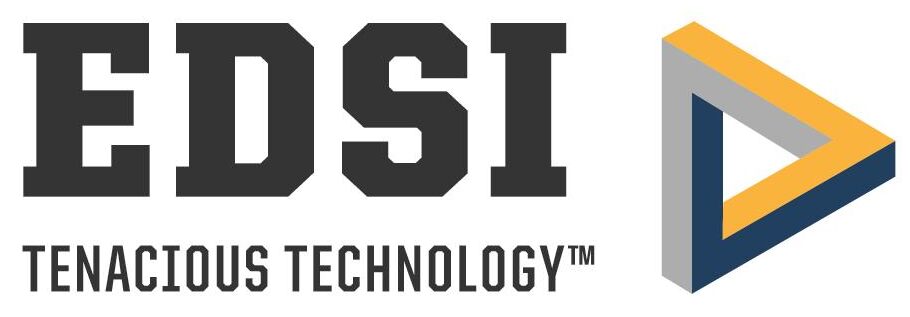Got Questions? We’ve Got Answers!
Here you will find answers to some of the most common questions we get asked. If you can’t find the answer you’re looking for, feel free to contact us!
Cloud Computing
What are the benefits of cloud computing?
Cloud computing offers several benefits, including:
- Cost-effectiveness: Pay only for the resources you use.
- Scalability: Easily adjust resources up or down as your needs change.
- Increased uptime: Cloud providers have robust infrastructure for reliable service.
- Improved security: Cloud providers invest heavily in security measures.
- Accessibility: Access your data and applications from anywhere with an internet connection.
Is cloud backup secure?
Reputable cloud backup providers like EDSI use advanced security measures like encryption to ensure your data’s confidentiality and integrity.
What happens if the cloud provider experiences an outage?
Reliable cloud providers like EDSI have redundant infrastructure in different locations to minimize downtime.
How long does it take to restore data from the cloud?
Recovery times depend on the size of your data and your chosen backup plan. We strive to offer fast and efficient data restoration.
Data Protection
What is data privacy?
Data privacy refers to the control individuals have over their personal information. EDSI is committed to protecting your data privacy and following best practices for data handling.
How does EDSI protect my data?
EDSI employs various data protection measures, including:
- Encryption: Data is encrypted at rest and in transit to ensure confidentiality.
- Access controls: User access is restricted based on permissions.
- Regular backups: Data is backed up regularly to ensure recovery in case of incidents.
- Compliance: EDSI adheres to relevant data security regulations.
Business Continuity
How can backups help with business continuity?
Regular backups ensure minimal downtime in case of disruptions. You can quickly restore your data and applications, allowing your business to resume operations promptly.
Do you offer disaster recovery (DR) solutions?
Yes, we can help you develop a DR plan that integrates with your backup strategy. This plan outlines steps to recover your systems and data in case of a major disaster.
Backup as a Service (BaaS)
What is BaaS?
Backup as a service is a cloud-based solution for backing up your data to a remote server. EDSI can manage your backups, ensuring your data is secure and readily available for recovery.
What are the advantages of BaaS?
BaaS offers several advantages:
- Reduced costs: Eliminate the need for on-site backup infrastructure.
- Automated backups: Scheduled backups ensure data protection.
- Scalability: Easily scale your backup storage as your data grows.
- Disaster recovery: BaaS facilitates data recovery in case of disasters.
Why is data backup important?
Data loss can occur due to various reasons like hardware failure, software corruption, cyberattacks, or human error. Backups ensure you have a copy of your data to restore in case of such incidents.
What types of backups do you offer?
We offer various backup solutions, including local backups (to external hard drives), cloud backups, and hybrid backups (combining local and cloud). We can help you choose the right solution based on your needs.
How often should I back up my data?
The frequency of backups depends on your industry, data sensitivity, and risk tolerance. We recommend daily backups for critical data and regular backups for less crucial information.
How long should I retain backups?
The retention period depends on your data regulations and needs. We can advise on best practices for data retention based on your industry.
Disaster Recovery (DR)
What is disaster recovery?
Disaster recovery (DR) is a plan and process for restoring data and IT infrastructure after a disruptive event, such as a natural disaster, power outage, or cyberattack.
How can EDSI help with disaster recovery?
EDSI offers DR solutions that ensure business continuity in case of disruptions. These solutions may involve replicating your data to a geographically separate location, enabling a quick recovery.
What is the difference between BaaS and DRaaS (Disaster Recovery as a Service)?
BaaS focuses on data backup, while DRaaS encompasses a broader range of services to restore entire IT systems after a disaster. BaaS is often a component of DRaaS.
Important Terminology to Understand
By understanding these key terms, you can make informed decisions about your backup strategy and choose the solution that best suits your business needs.
Backup and Recovery Terms
- Backup: Creating a copy of your data for safekeeping and future restoration.
- Cloud Backup: Backing up data to a remote server managed by a cloud storage provider.
- Data Retention: The period for which you keep your backups for potential recovery.
- Differential Backup: Backs up all data that has changed since the last full backup, faster than a full backup but uses more storage than incremental.
- Encryption: Transforming data into a scrambled format requiring a key for decryption, ensuring data confidentiality.
- Full Backup: Creates a complete copy of all your data at a specific point in time.
- Hybrid Backup: Combining local and cloud backups for added security and redundancy.
- Immutable copy: A data version that cannot be changed or deleted, ensuring a reliable record.
- Incremental Backup: Only backs up data that has changed since the last backup, saving time and storage space.
- Local Backup: Backing up data to a physical storage device like an external hard drive or USB drive connected to your computer.
- Offsite: Located in a different physical location, often for backup or disaster recovery purposes.
- Recovery Point Objective (RPO): The acceptable amount of data loss that can occur between backups.
- Recovery Time Objective (RTO): The targeted time frame to restore your systems and data after a disruption.
- Scalability: The ability of a system to handle increasing or decreasing demands.
Business Continuity and Security Terms
- Asset management and inventory: Tracking and managing all hardware, software, and IT resources within an organization.
- Authentication: Verifying a user’s identity before granting access to a system.
- Business Continuity: The ability of your business to maintain operations with minimal downtime after a disaster or other incident.
- Compliance solutions: Services or tools that help you meet industry regulations or data security standards.
- Data encryption: Scrambling data to make it unreadable without a decryption key, protecting confidentiality. (Already mentioned in Backup and Recovery)
- Disaster Recovery (DR): A plan and process for restoring your IT infrastructure and data after a major disruption.
- Firewall: A security barrier that controls incoming and outgoing network traffic.
- HIPAA: Health Insurance Portability and Accountability Act (US regulation protecting healthcare data).
- Hosted virtual servers: Virtual machines running on a cloud provider’s infrastructure, eliminating hardware management for you.
- Incident response planning: Developing a plan for how to identify, contain, and recover from security incidents.
- Infrastructure as a service (IaaS): Renting out essential computing resources like servers, storage, and networking in the cloud.
- Intrusion detection: Identifying and responding to unauthorized attempts to access a computer system.
- MFA (Multi-Factor Authentication): Adding an extra layer of security by requiring multiple verification methods (e.g., password and fingerprint).
- NIST: National Institute of Standards and Technology (US agency providing cybersecurity guidelines).
- Patch management: Keeping software applications up-to-date with security patches to fix vulnerabilities.
- S3 object repository: A storage location in Amazon S3 for holding various data files.
- SIEM (Security Information and Event Monitoring): A system that collects and analyzes security data from various sources to detect threats.
- SOC 2: A security audit standard for service providers that manage customer data.
- Software distribution: Deploying software updates or new programs across multiple devices efficiently.
- Uptime: The percentage of time a system is operational.
- Vulnerability scanning: Proactively searching for weaknesses in computer systems that attackers could exploit.

